Magic in Japan: Taking the Shinkansen “Bullet” Train
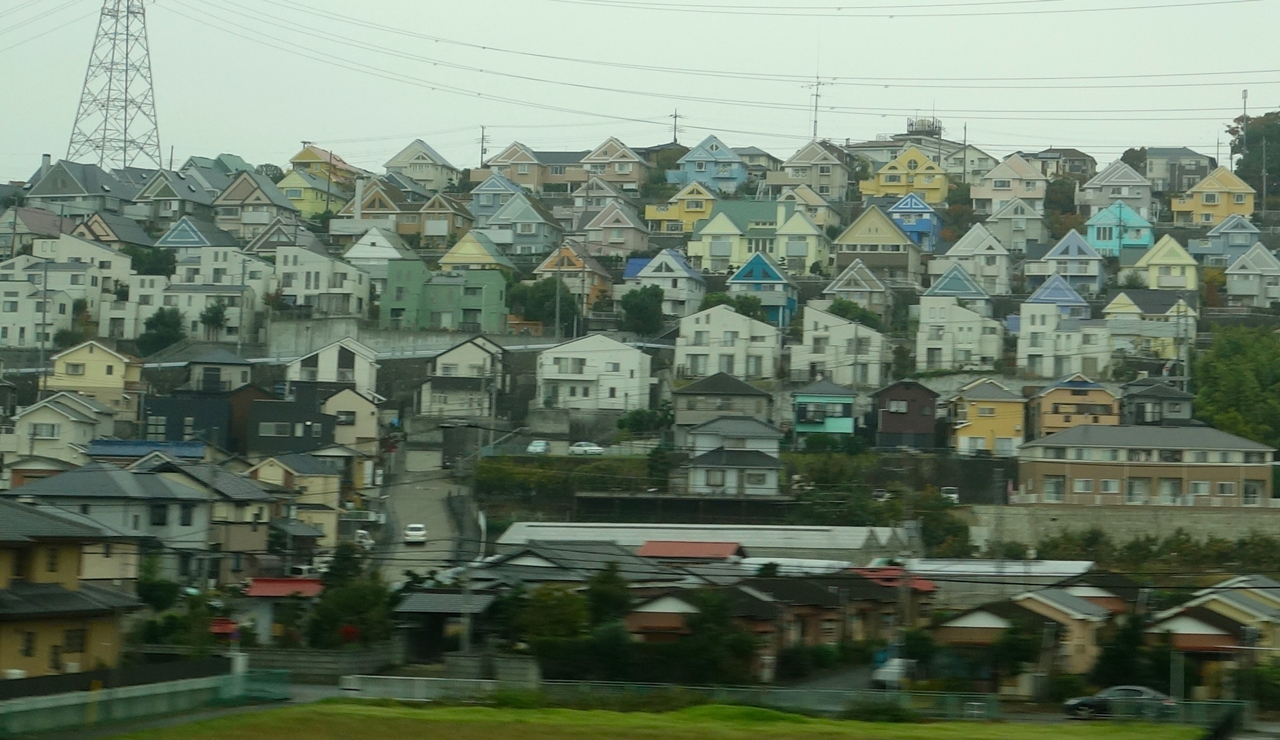
Trip Index:
Introduction
Getting There – JAL First Class
Hotel Review: Ritz-Carlton Tokyo
Guide to Tsukiji Fish Market
Room Service Review: Ritz-Carlton Tokyo
Day in Tokyo
Shinkansen Bullet Train
Hotel Review: Ritz-Carlton Kyoto
Tea at the Ritz-Carlton Kyoto
Day 1 in Kyoto
Day 2 in Kyoto
Room Service Review: Ritz-Carlton Kyoto
Park Hyatt Tokyo Revisited
Getting to Hiroshima
Hotel Review: Sheraton Hiroshima
Day trip to Miyajima
Day in Hiroshima
St. Regis Osaka
Day in Osaka
Tokyo is connected to many of Japan’s largest cities by way of a high speed train often called the bullet train or Shinkansen. Standing beneath the board with the day’s timetable, a quick glance at the screen filled with triangles and circles and I decided not to use the automated kiosk.
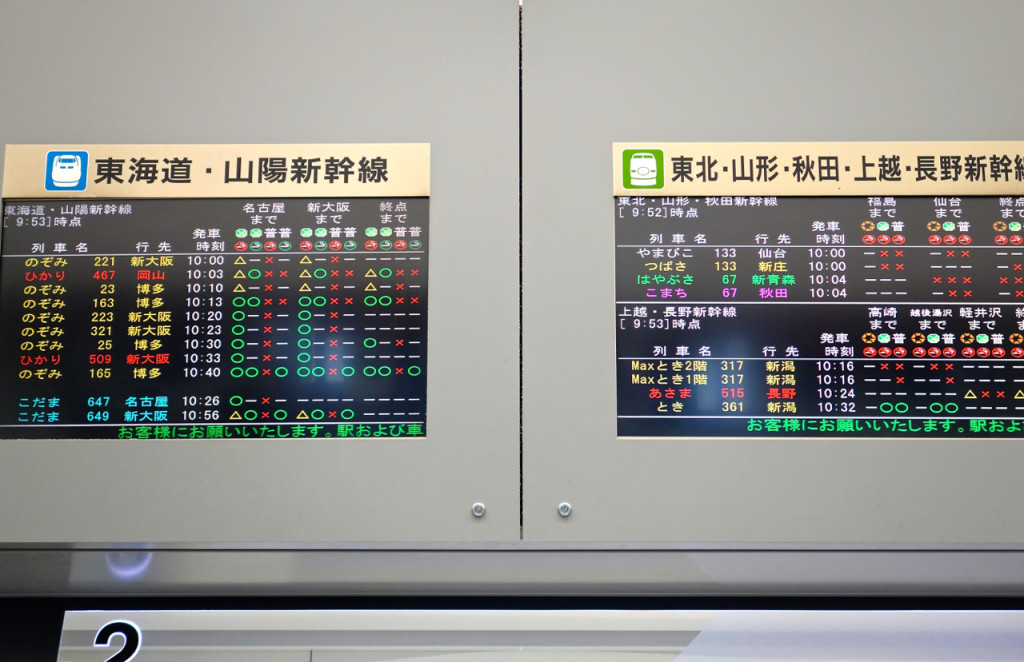 Hmm, which way to Kyoto?
Hmm, which way to Kyoto?
From the Ritz we had taken a cab to the Japan Rail station where we could get train tickets. We stood in line for a live person and chose the Tokaido line which would take us to the Kyoto station.
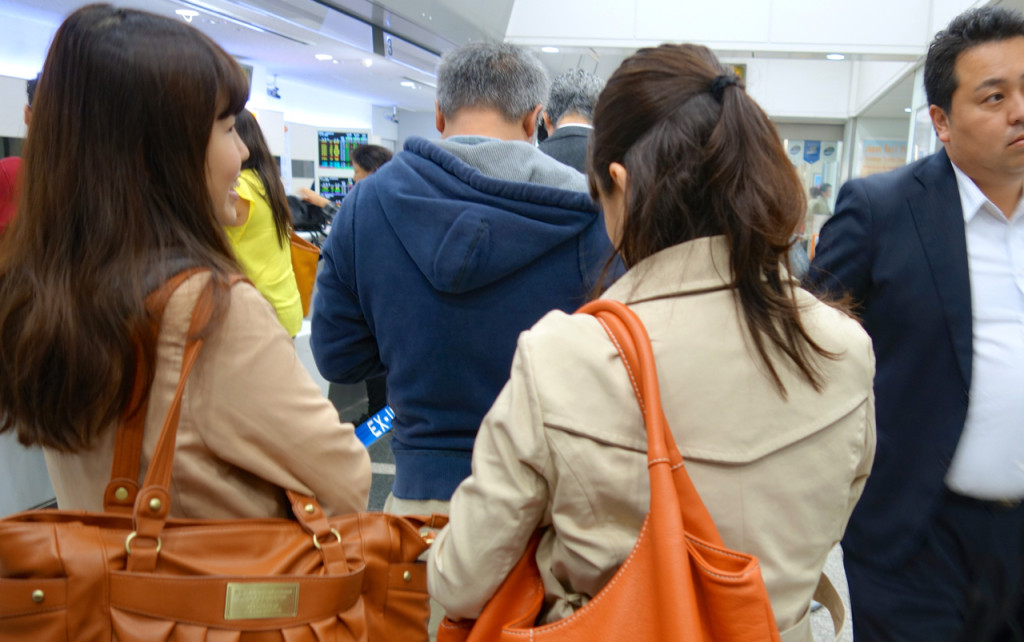 Waiting in line
Waiting in line
There are either two or three seat classes depending on the train. Ordinary, Green Car and Gran Class are comparable to airplane Economy, Business and First. Ordinary seats are usually in a 3×2 configuration and are the most full of the three classes. Green Car seats come in a 2×2 configuration and are all assigned seating. Gran Class are not available on all trains yet but they come with 2×1 seating. I chose Green Car, and was given tickets and train number.
Just after coming up the stairs, I stopped at one of the popular little shops. The best ones have ekiben, which are train station bento boxes. Ekiben have a sort of cult following (or maybe it is just me that loves them!). I saw sushi, sandwiches, noodles, and chicken and rice.  All of the ekiben come in cute little boxes or wrappings, and they are made fresh at least once a day. The ones I saw were between Â¥ 700 and 1000, so in the 5-8 USD price range. What a steal for fresh, healthy food. I’m not sure if ekiben stands are at all the train stations but I always keep my eyes open for them! What’s your favorite one?
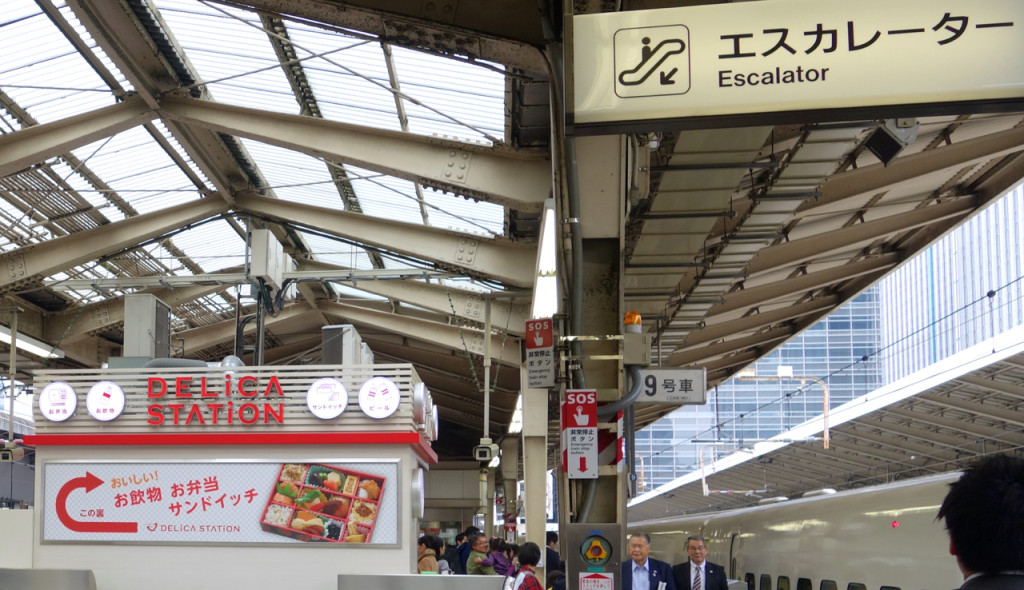 Train station shop
Train station shop
I really appreciated that there was just enough English to help me figure out where to go, and thought as I often do that it must be very difficult for Japanese tourists when visiting the US with absolutely no clues in their native language to help guide them. Plus in Japan any time I am confused or lost, without fail there is a smiling person that is patient and helpful getting me on my way. In the US I am hopeful but not sure visitors always get the same.
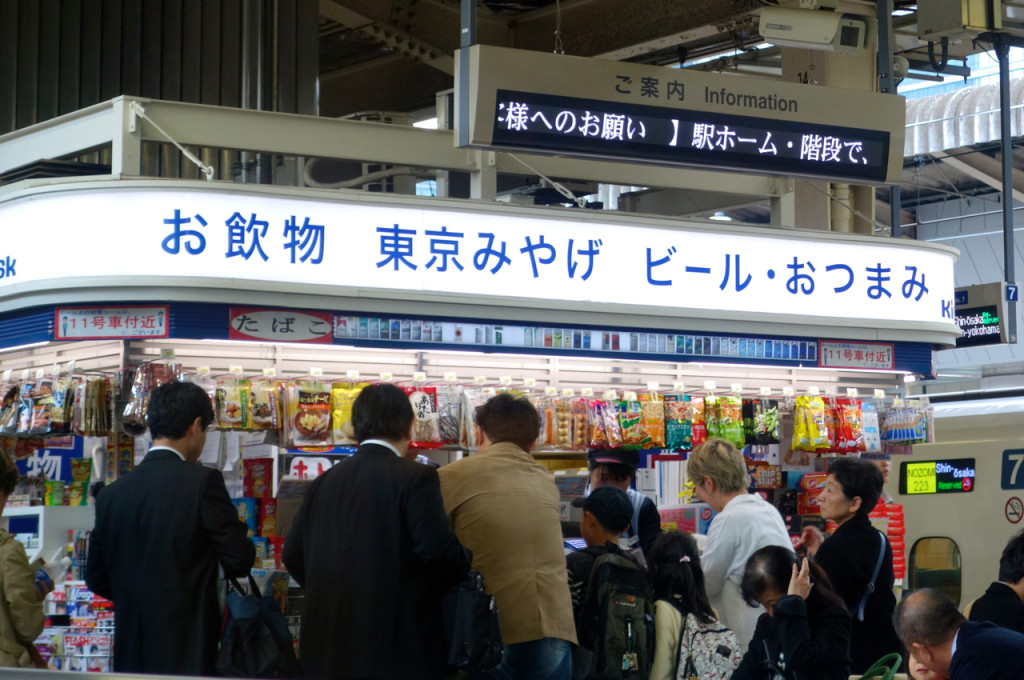 Information Center
Information Center
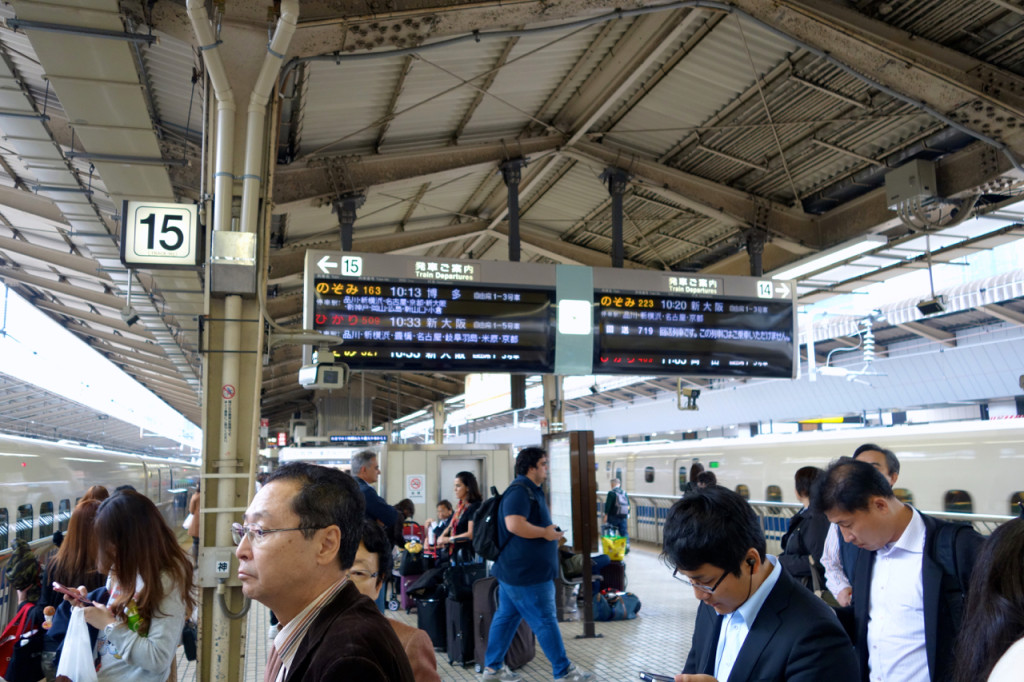 Train station
Train station
I found train car #8 but before it was time to board, the cleaning ladies walked on in their bubble-gum pink uniforms.
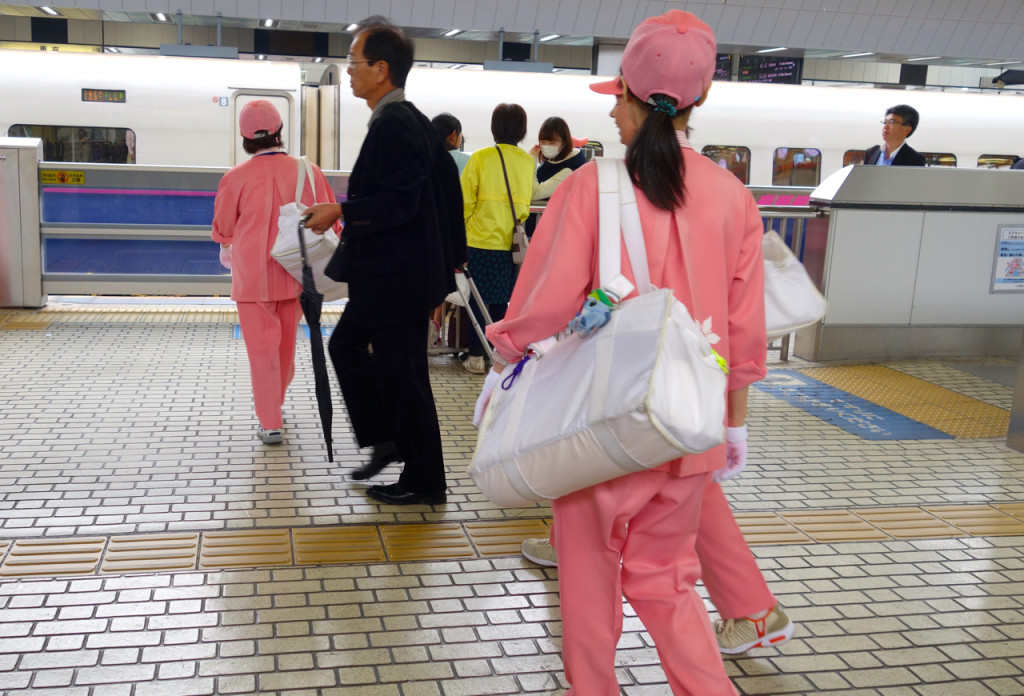 Train Cleaning Team
Train Cleaning Team
Finally, it was time to get on and take my seat. The Nozomi category meant that it was the fastest of the three train types and wouldn’t stop at any stations other than major ones.
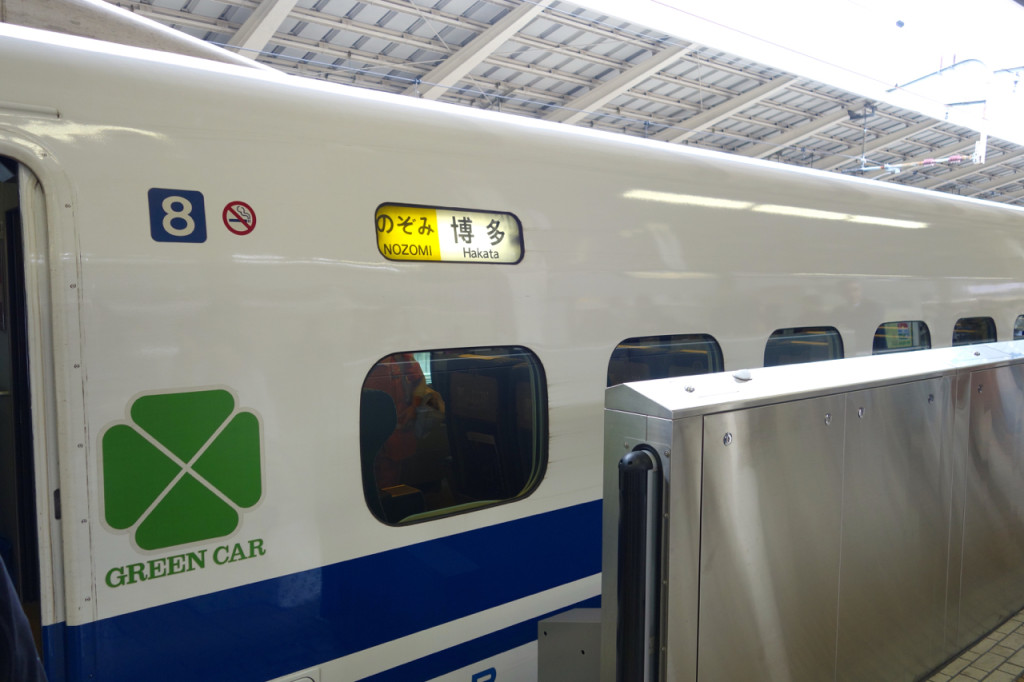
Our assigned seats were 3C and 3D, and though we just had small luggage that fit in the overhead racks above the seats, some people with large bags chose to wedge them in between the last row of seating and the wall.
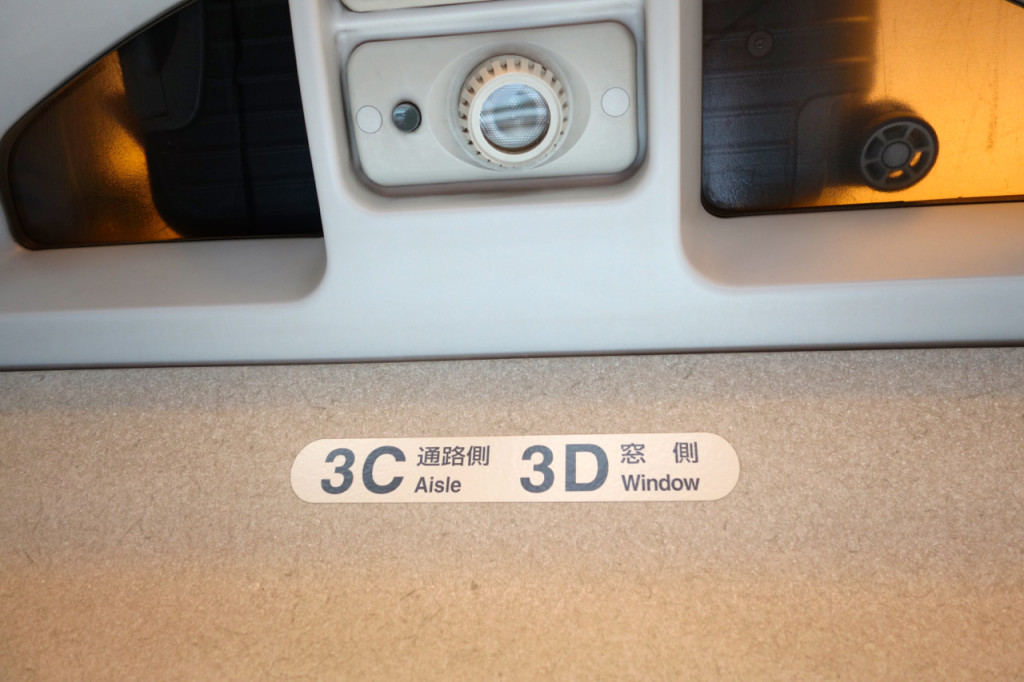 Seat numbers
Seat numbers
The seat was very comfortable, and even came with a little foot rest.
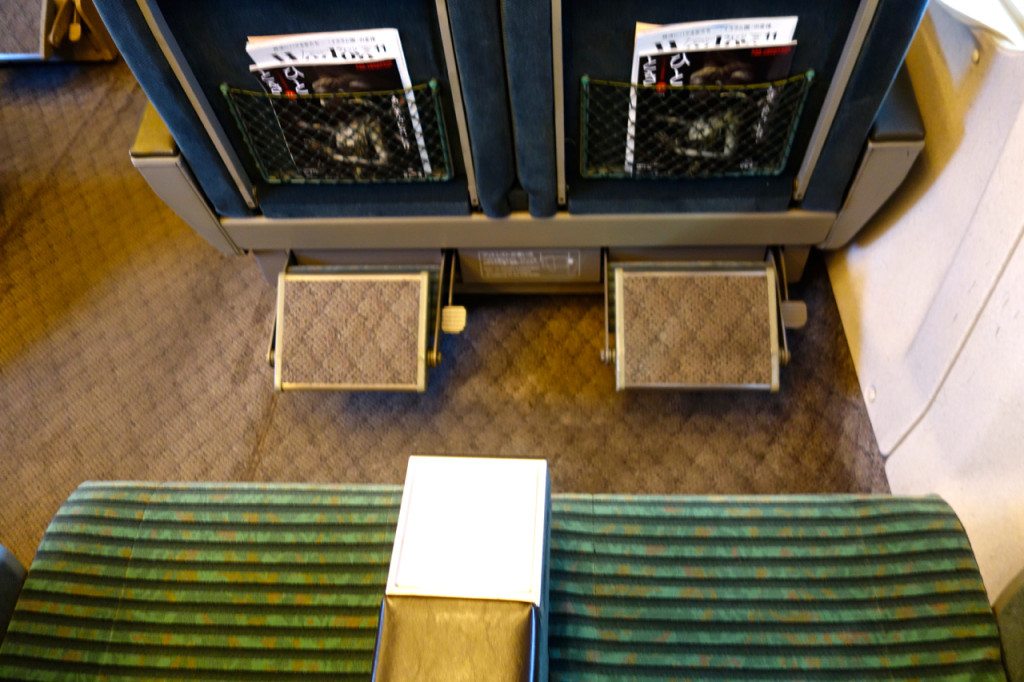 Foot Rest
Foot Rest
The compartment wasn’t full, and no one in front of me reclined their seat either.
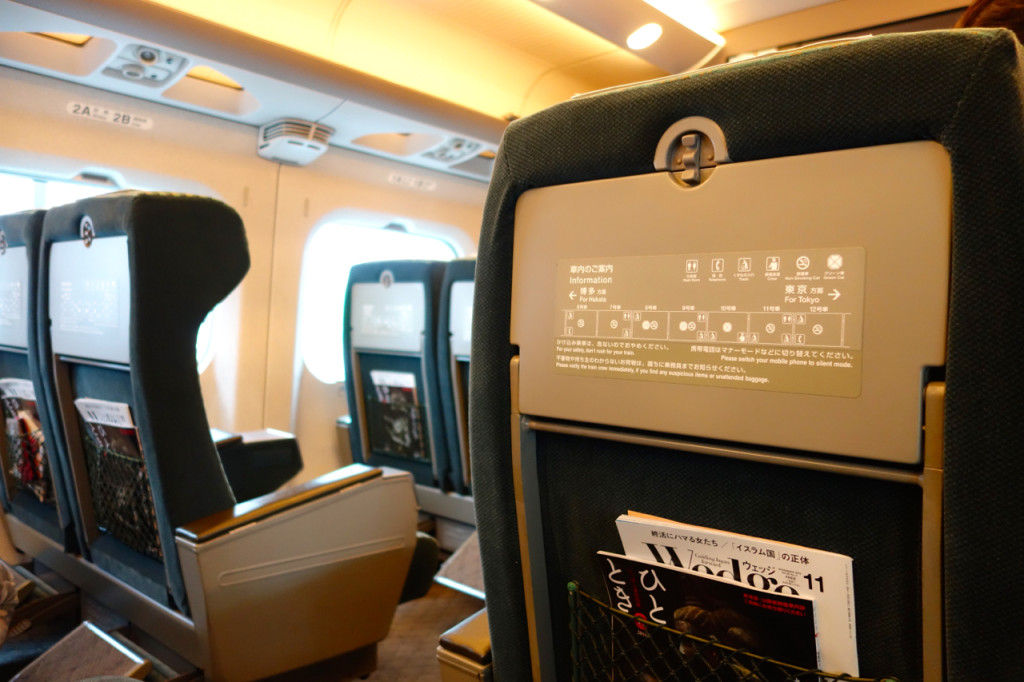 Train Compartment
Train Compartment
I thought it was cute that the helpful information on the back of the seat indicated, “For your safety, don’t rush for your train” even though I already boarded and was seated. Perhaps this is just a gentle reminder for those changing trains.
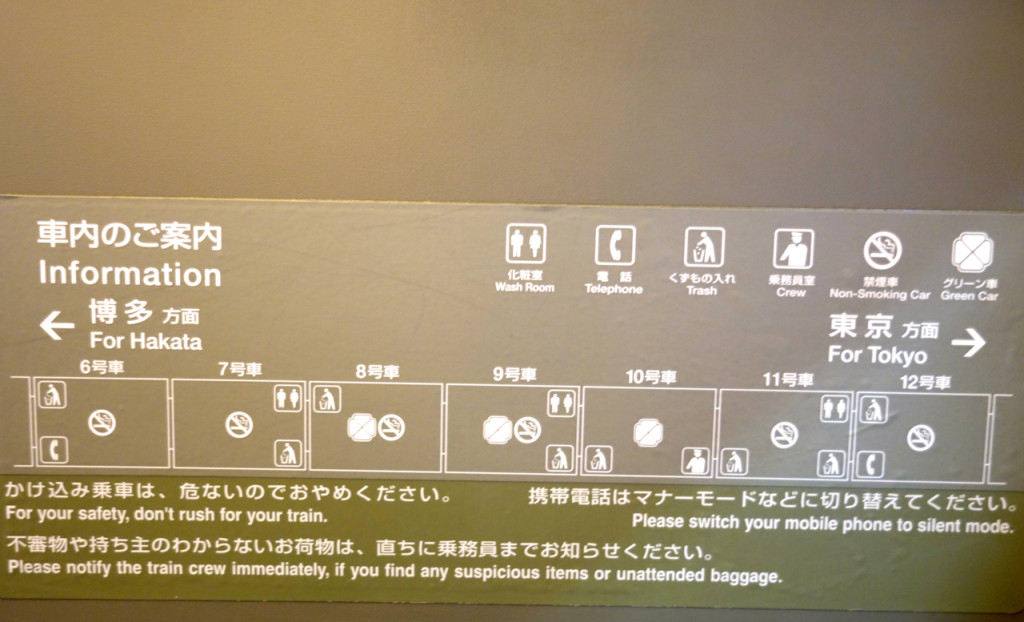 Train Info
Train Info
The ladies to the left of me immediately pulled out their ekiben and I stealthily tried to lean over and figure out which ones they had gotten without being noticed. I failed, since I couldn’t get close enough to see what they had and didn’t want to attract too much attention. I could tell there were some noodles though, since I heard appreciative slurping.
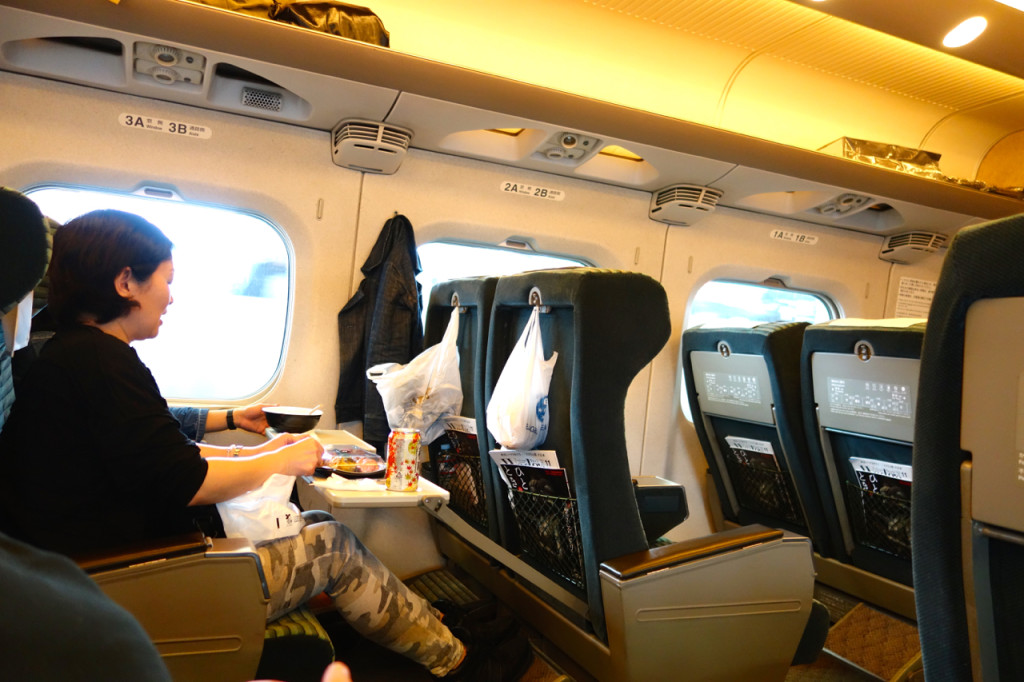 Ekiben
Ekiben
The train pulled away from the station and I was treated to an ever-changing scenery though the window. It was almost silent inside the train. No one was on a cellphone, no one was talking loudly, and the pull of the train had lulled some passengers to sleep. I gazed out the window and watched the little towns and fields whisk by. The train hit speeds of 280 kmh, or 173 mph which is pretty fast!
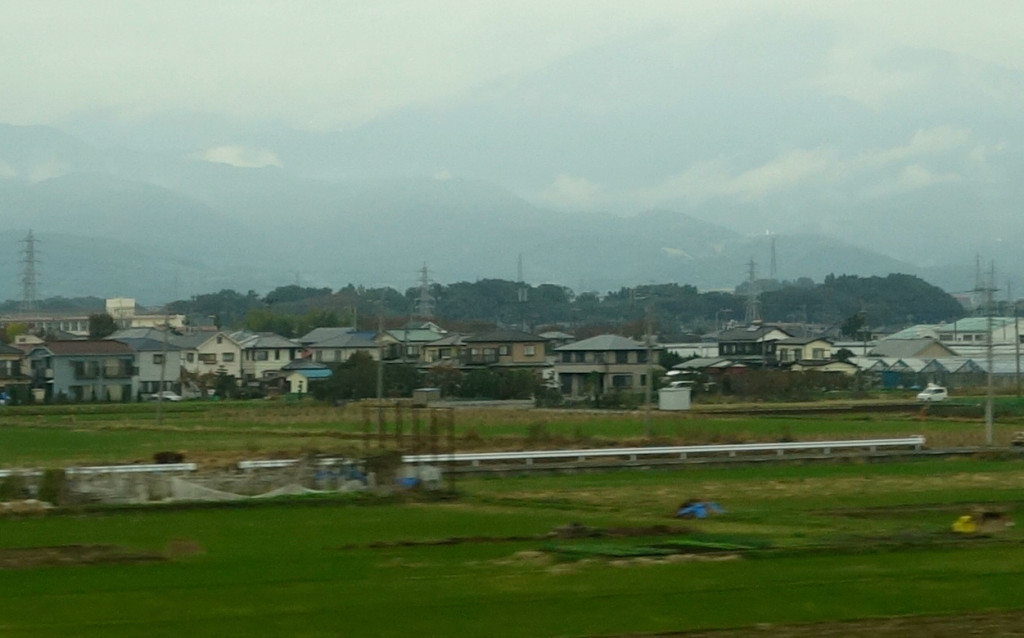 Scenery
Scenery
 Scenery
Scenery
A cart came by with snacks and drinks, and complimentary cleaning cloths were handed out.
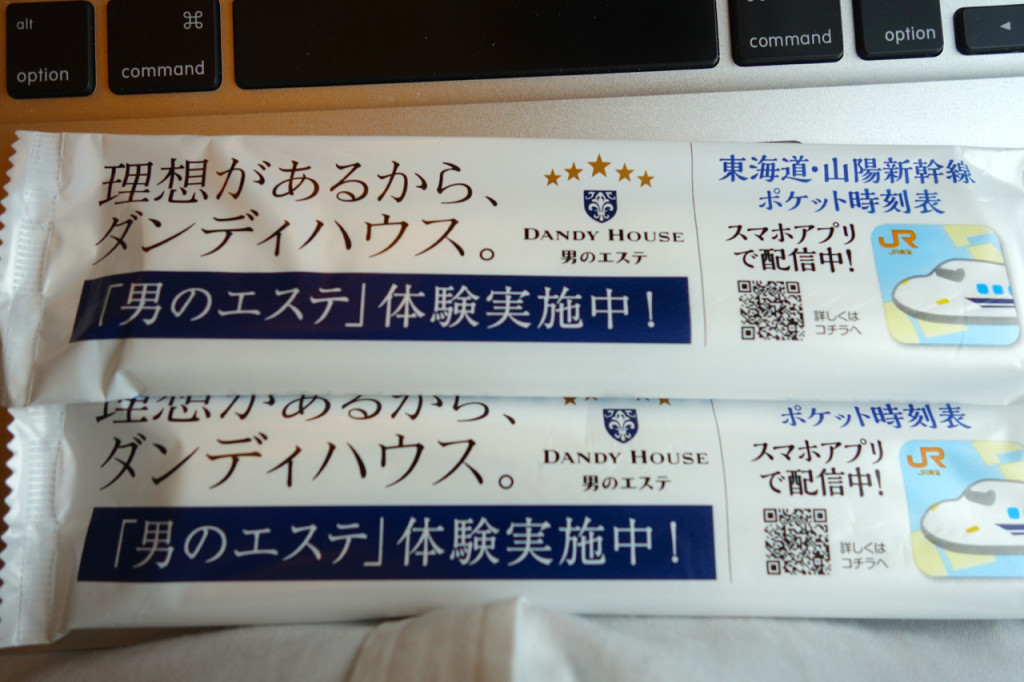 Cleaning cloth
Cleaning cloth
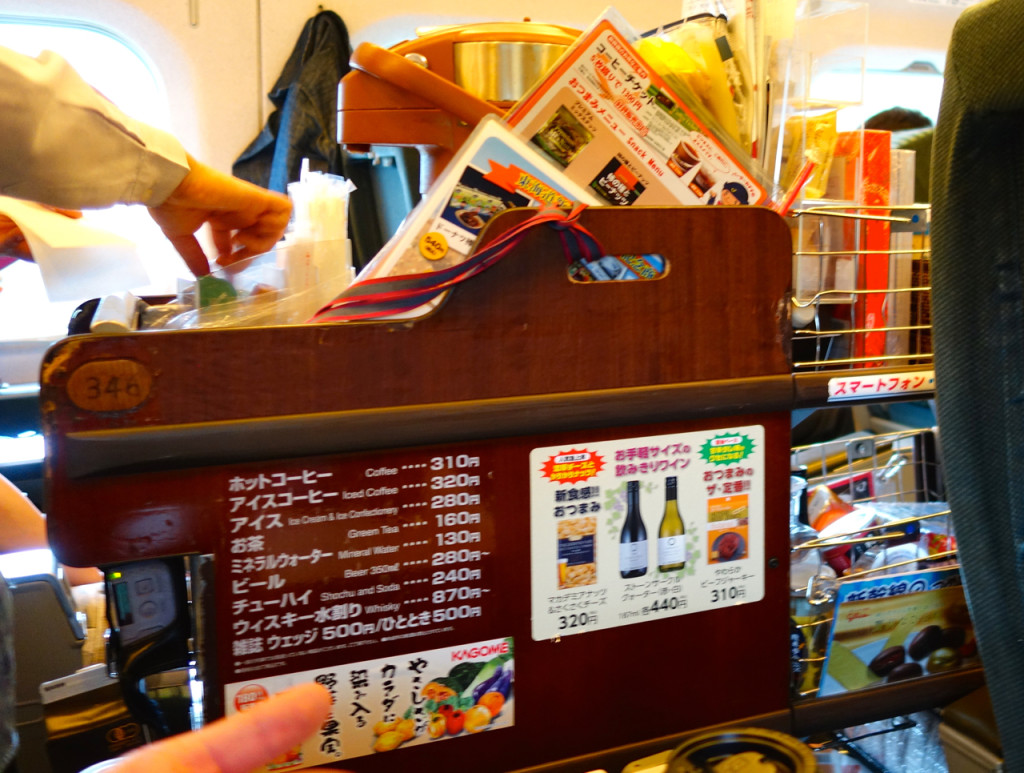 Food cart
Food cart
The seat tray tables were large and sturdy which was great for holding a laptop as well as a meal.
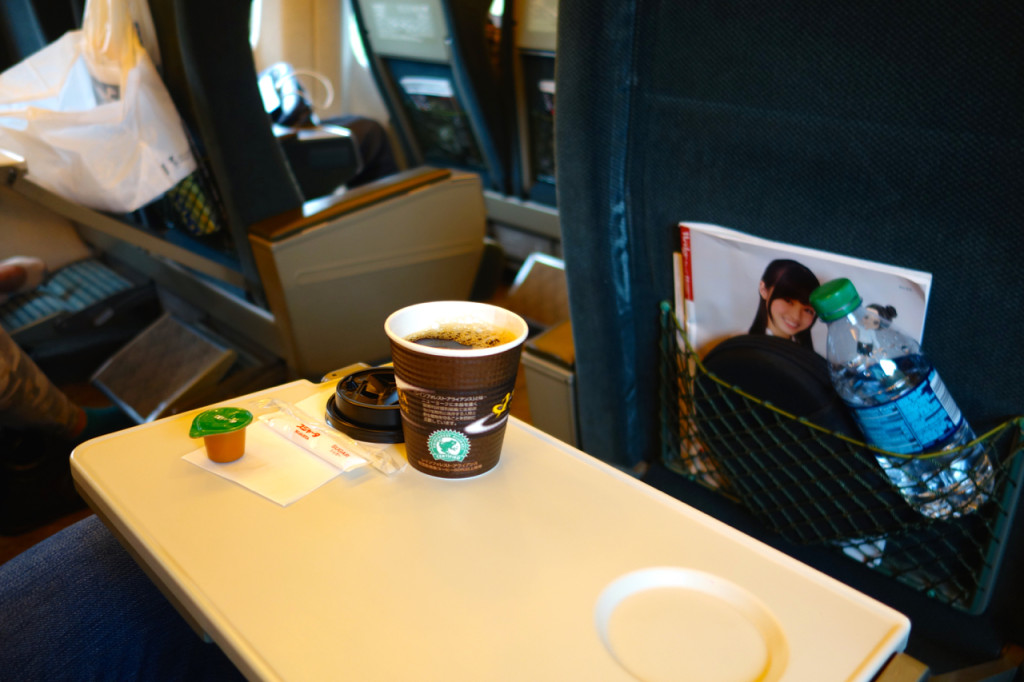 Tray table
Tray table
It was just over 2 hours before we arrived at Kyoto Station. As far as I know it hadn’t rained that day but a bunch of people carried clear plastic umbrellas. Maybe it was expected to rain later on.
 Kyoto Station
Kyoto Station
On the way to the taxi line I passed what promised to be a piano concert later on. How cool! People walked by, took a seat and waited. I didn’t know how long it would be and wanted to continue on to my hotel, but it sure was neat that there was a free event like this right in the station.
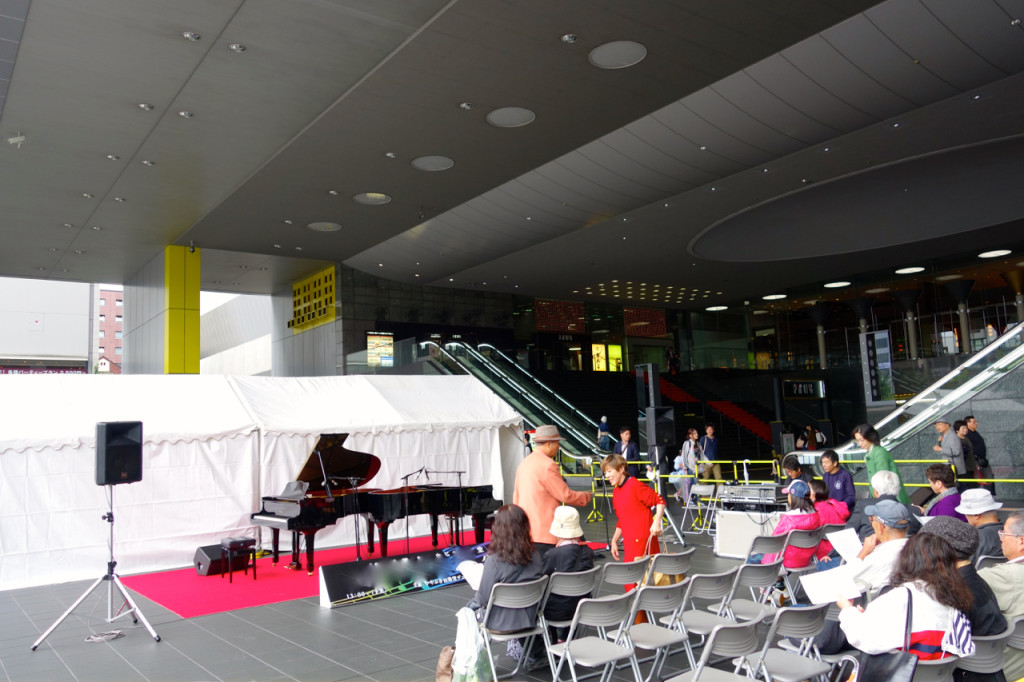 Piano concert
Piano concert
I stood in the line waiting for my taxi, and chuckled when I read the sign below. Somehow, spelling mistakes in English when translated from Japanese just seem endearing to me.
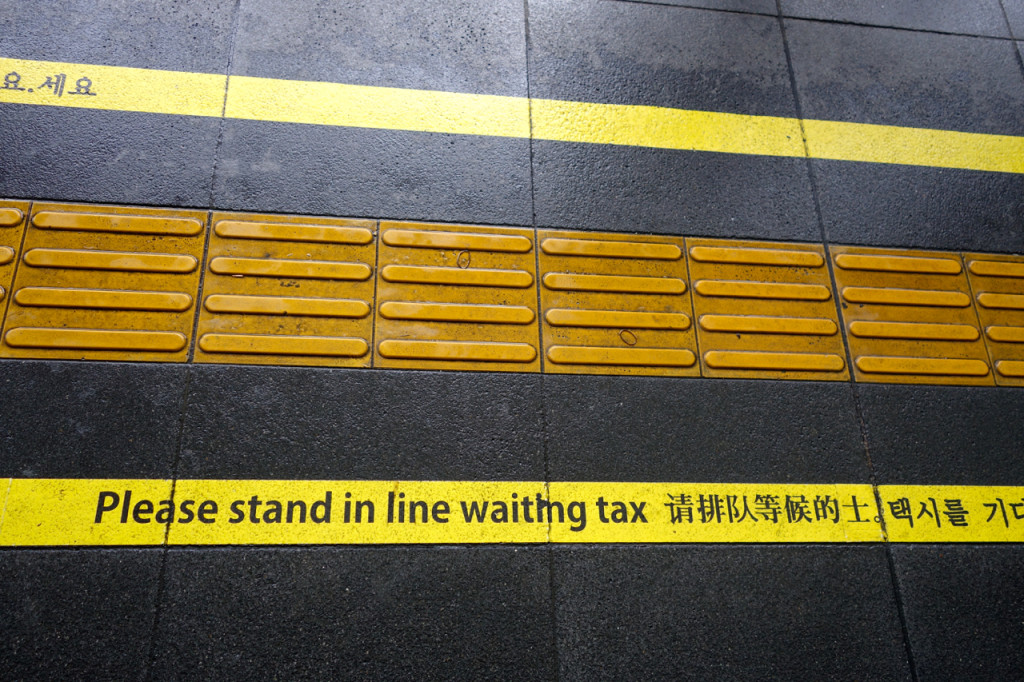 Fun translation
Fun translation
The line was orderly and moved fairly quickly.
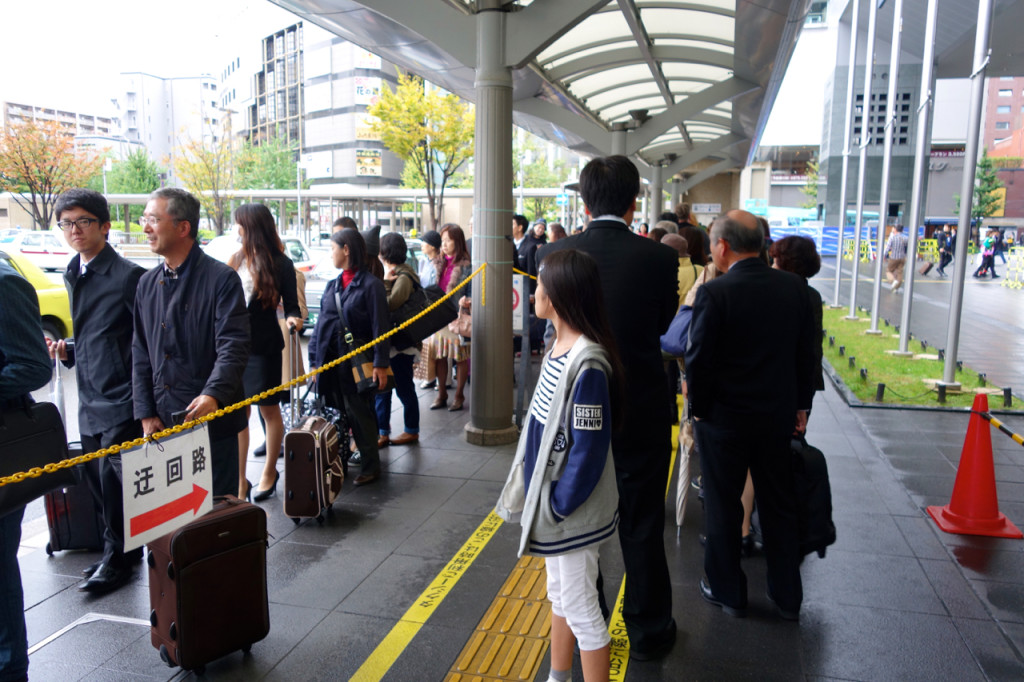 Taxi line
Taxi line
Soon it was my turn and I got in the cab, and I remembered the first time I took a taxi in Japan. I walked up and started to open the door when it flew open, much to my surprise. Taxi doors are automatic in Japan, which is a very nice feature. Hands full of shopping bags or kids? No problem, the driver presses a leaver and the door just swings open. Once you are in, it will swing closed. Awesome. Another thing I love about Japanese cabs is that they are immaculately clean and the driver wears a suit and white gloves. Â It feels fancy, maybe in part to the fact that there is also lacy white covering over the headrests.
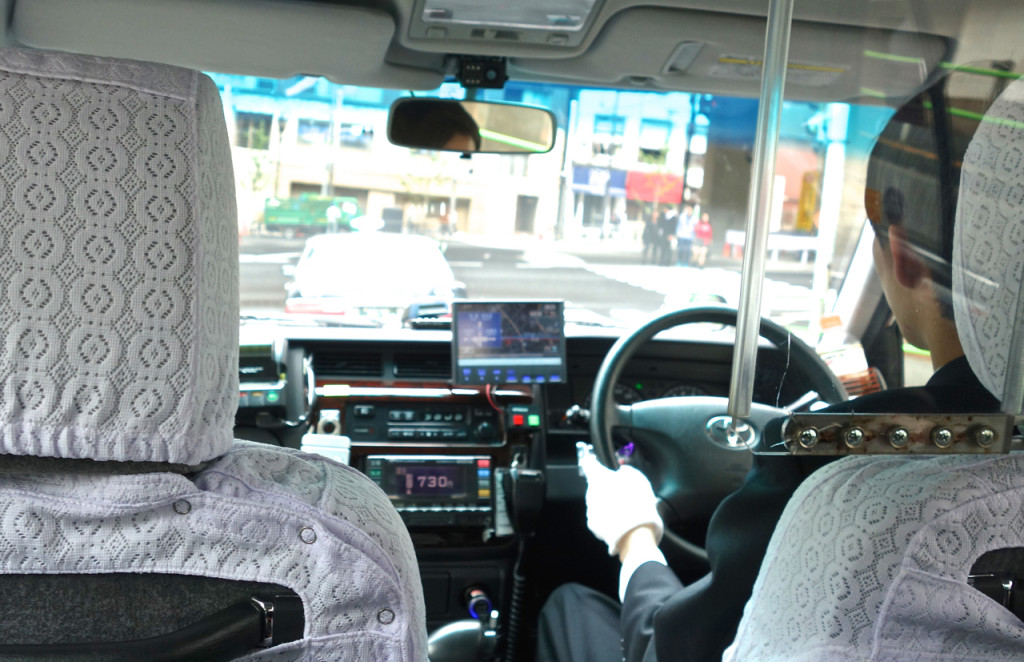 Fancy taxi
Fancy taxi
When taking a taxi in Japan the driver doesn’t often speak English. They do usually know the names of the big hotels and sights, but if I am staying at a hotel and taking a cab for an excursion during the day I’ll have the concierge write down the name of the place in Japanese on the back of the hotel’s business card so I can show it to the driver.
Once I was in the taxi I didn’t have to stress that the driver would get lost or take “the long way” around to get me to my destination, unlike many places in the world. They take pride in their job, and my driver took the quickest and most efficient way to deliver me right to the doorstep of the Ritz-Carlton Kyoto.
Stay tuned for the Ritz-Carlton Kyoto review!

How long was the ride on the Nozomi train from Tokyo to Kyoto?
Patty, it was just about 2 1/2 hours. Thanks for reading!
Great report!
A few years ago, I guess stress got to a Tokyo taxi driver in Roppongi. I saw him get out of his car and walk into a subway. His ditched taxi was apparently left in neutral and started rolling backwards into the oncoming traffic where a woman collided with it (not too hard). I tried to help the woman who was pretty upset about denting her car.
The order of Japan can spark insanity.
Oh no! Thank goodness you were there to help, Bill and no one was hurt.
As a tourist the order and perfection of everything is amazing, but the pressure to do so as someone living there is probably enormous.